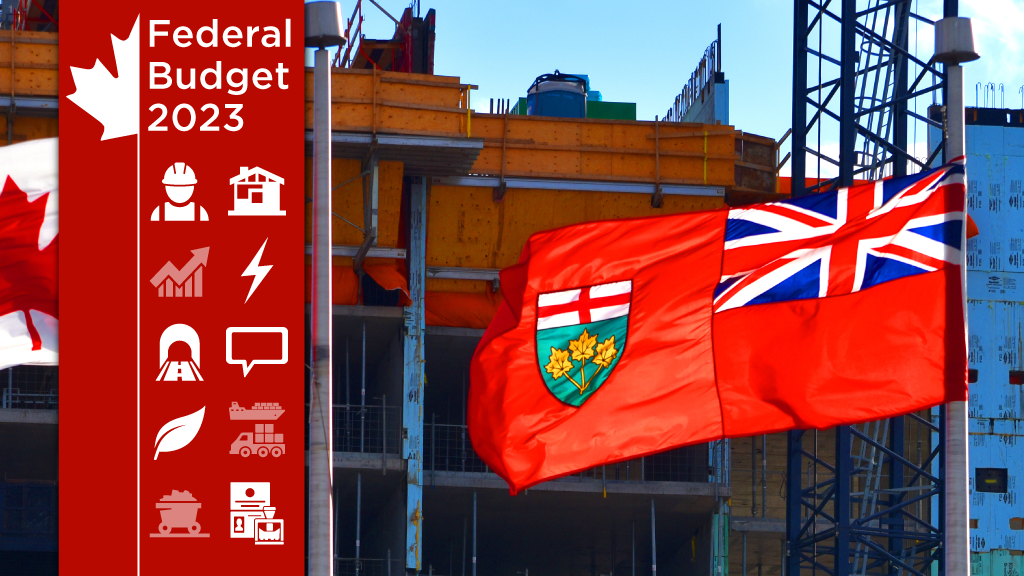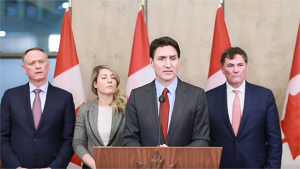While the federal governmentÔÇÖs most recent budget includes some opportunities for the building industry to participate in Ontario clean energy projects, stakeholders are saying it missed the mark when it comes to housing, labour, immigration and funding for municipalities.
ÔÇ£A defining item that is key, especially competing with provisions in AmericaÔÇÖs Inflation Reduction Act, is that this federal budget announced additional details on the labour requirements for the Clean Technology and Clean Hydrogen Investment Tax Credits,ÔÇØ said the Ontario Building Trades Union in an email to the Daily Commercial News.
To be eligible for the highest tax credit rates, businesses must pay their workers a total compensation package that equates to the prevailing wage based on union compensation, including benefits and pension contributions.
ÔÇ£The tax credit also requires that 10 per cent of the tradesperson hours worked must be performed by registered Red Seal trade apprentices,ÔÇØ states the Building Trades.┬áÔÇ£This sets an important standard for prevailing wage. It remains to be seen how effectively the prevailing wage policy will be implemented and enforced by the government.ÔÇØ
The prevailing wage, mentioned in the budget, is a labour condition that was hinted by the government months ago with very little consultation with the broader industry, Paul de Jong, president of the Progressive Contractors Association of ║┌┴¤│È╣¤═° stated.
ÔÇ£The government just rolled this thing out in the budget and it really is predicated on the presumption that the only way to set the wage is to use the building trades unions,ÔÇØ he said. ÔÇ£The phrase that is used in the budget is ÔÇÿprevailing wage thatÔÇÖs set by multi-employer bargaining.ÔÇÖ What is that is code for is the building trades unions. ThatÔÇÖs not a wrong thing, the building trades have a place in the Canadian marketplace, but they are not the only stakeholder. What normally happens in a vibrant construction sector is that the market sets those kinds of things.
ÔÇ£There are opportunities for workers, they will get paid well whether they are traditional union or progressive union like CLAC or non-union. That really should be the case with the clean energy sector.ÔÇØ
In general, the focus on green energy is an opportunity for tens of thousands of workers in an emerging sector, he said.
ÔÇ£What really needs to happen is a more sophisticated industrial strategy, which includes both clean energy and the traditional extractive resource market, which is very strong,ÔÇØ de Jong explained.
ÔÇ£Northern Ontario has a tremendous amount of minerals that are needed in this new economy. If ║┌┴¤│È╣¤═° really wants to have a strong balanced marketplace it needs to do a few things that are missing in this budget. Instead of choosing an either/or kind of a frame where there is an explicit transition away from the natural resource sector towards an emerging, yet-to-be defined in terms of size and scope clean energy sector, the government seems to be picking the winner there ahead of time.ÔÇØ
Richard Lyall, president of the Residential Construction Council of Ontario, described the budget as ÔÇ£fiscal fingerpaintingÔÇØ and said there were some measures to help young people enter the housing market but ultimately it didnÔÇÖt address how to rapidly increase housing supply.
The budget states the government intends to move funding from the National Housing Co-Investment FundÔÇÖs repair stream to a new construction stream, as needed, to boost the construction of new affordable homes. It also proposes to commit an additional $4 billion over seven years, starting in 2024-25, to implement a co-developed Urban, Rural and Northern Indigenous Housing Strategy.
However, there was no mention in the budget of providing HST relief for new housing projects as RESCON had suggested in its pre-budget submission.
┬áÔÇ£The budget is nibbling around the edges of the problem and doesnÔÇÖt fully address the systemic problems that are delaying construction of much-needed housing,ÔÇØ Lyall stated.
ÔÇ£It speaks to the people in power being totally out of touch with the reality on the streets relative to housing, homelessness.ÔÇØ
For the Residential and Civil Construction Alliance of Ontario (RCCAO), the biggest concern is the absence of new dedicated funding to help cities with the cost of state-of-good-repair projects.
ÔÇ£The repercussions of the pandemic unfortunately on municipal budgets are still being felt across cities in Ontario, particularly in the City of Toronto,ÔÇØ said Nadia Todorova, executive director, RCCAO. ÔÇ£Without additional funding from the federal government and the province, municipalities are not going to be able to invest in that critical infrastructure work that is needed to support the growth of the city and the population growth that we are expecting to see.
ÔÇ£Without that funding support, and we saw this in the latter half of 2020, municipalities are going to be forced to decrease their infrastructure project tenders which will have immediate results in terms of significant numbers of construction workers being laid off.ÔÇØ
Giovanni Cautillo, president of the Ontario General ContractorÔÇÖs Association, said marketing ║┌┴¤│È╣¤═° as a source of clean energy to the world is great from an advertising perspective, but ensuring the implementation is done properly is also important.
ÔÇ£Clearly this is a direct reaction to the United States passing the Inflation Reduction Act. Therefore, ║┌┴¤│È╣¤═° must respond in this fashion if they want to continue to have relations with the USA on energy products,ÔÇØ Cautillo said. ÔÇ£Having the ║┌┴¤│È╣¤═° Infrastructure Bank investing $10 billion through its Clean Power priority area, and at least $10 billion through its Green Infrastructure priority area, are excellent sound bites. The burning question is who will be building this infrastructure since we, the construction sector, have a major shortfall in skilled trades people to satisfy the current requirements, let alone the proposed ones.ÔÇØ
Cautillo said the budget was ÔÇ£muteÔÇØ on where ║┌┴¤│È╣¤═° will source workers.
ÔÇ£What is the government doing to allow construction the ability to obtain more skilled workers through immigration?ÔÇØ he asked. ÔÇ£If they had detailed a comprehensive plan to modernize and better the immigration system, this budget would have been seen as much more attractive to our sector.ÔÇØ
Ian Cunningham, president of the Council of Ontario Construction Associations, expressed concern about the level of government debt.
ÔÇ£Given the current economic circumstances, itÔÇÖs not the recipe of taxation and spending I was expecting,ÔÇØ Cunningham said in an email.┬áÔÇ£The level of federal government debt is worrisome, especially when coupled with provincial debt. Economic growth is currently levelling off and could fall into negative territory, the cost of almost everything is on the rise and interest rates are likely to continue on the upward path. Going forward, the federal government could be left with little fiscal wiggle room to provide the needed stimulus.ÔÇØ











Recent Comments
comments for this post are closed